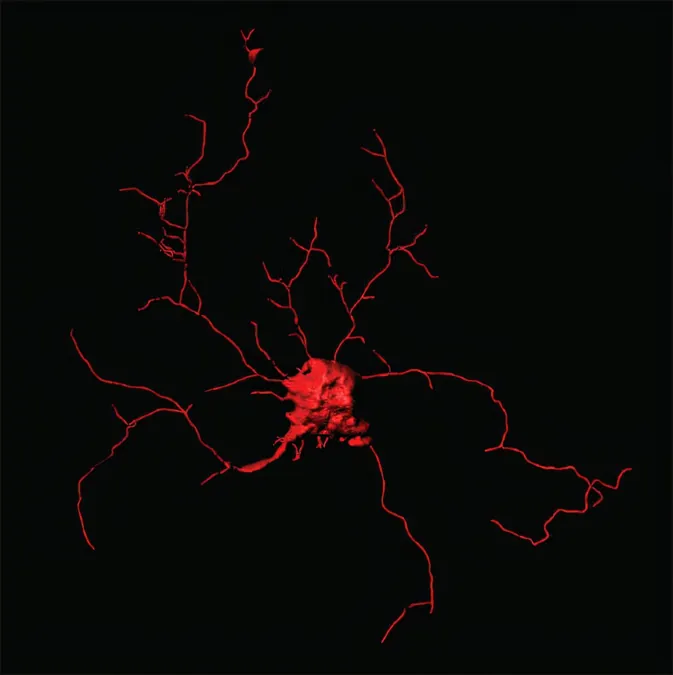
Groundbreaking Study Reveals Neural Flexibility: Brain Cells Can Change Identity!
2025-04-01
Author: Nur
Groundbreaking Study Reveals Neural Flexibility: Brain Cells Can Change Identity!
In a revolutionary shift for neuroscience, a new study has uncovered that neurons, the vital cells responsible for transmitting messages throughout the brain and body, exhibit far greater plasticity than previously understood. Historically, scientists believed that once neurons developed into their specific subtypes from stem cells, they remained fixed, regardless of external influences. However, research conducted by the Braingeneers—a collaboration between UC Santa Cruz and UC San Francisco—challenges this long-held notion.
Published in the journal *iScience*, the groundbreaking paper highlights the Braingeneers’ innovative use of cerebral organoids—three-dimensional models of brain tissue—to delve into the complexities of brain development. This research promises to enhance our understanding of how different neuron subtypes contribute to neurodevelopmental disorders and overall brain functionality.
Lead author Mohammed Mostajo-Radji, a research scientist at the UC Santa Cruz Genomics Institute, remarked, "This discovery contradicts the belief that neuronal identity is entirely stable. It compels us to rethink how neurons form, persist, and how environmental factors can influence these processes."
A Neurobiology Milestone
The cerebral cortex, which constitutes the brain's outer layer, consists of two primary neuron types: excitatory neurons (80% of the total) and inhibitory neurons (20%). Notably, the majority of these inhibitory neurons (an impressive 60%) are parvalbumin-positive neurons, which play a crucial role in brain plasticity. They influence our ability to learn languages without an accent and adapt our sensory perceptions following the loss of a sense. Importantly, they are also linked to several neurodevelopmental conditions, including autism and schizophrenia.
In a significant scientific achievement, researchers successfully generated a large number of parvalbumin-positive neurons within live organoid models—a first in this field. These neurons were expertly transplanted and cultured in 3D environments that closely emulate the human brain, shedding light on the pivotal role of three-dimensional structures in neuron development. “It’s evident that 2D models fall short,” said Mostajo-Radji. “Our findings suggest that other cell types may also require a 3D environment for optimal development—a revelation that could reshape our understanding of cell culture techniques.”
Unlocking New Research Avenues
The newfound ability to produce and sustain parvalbumin-positive neurons within the lab opens unprecedented research avenues into their significant roles in neurodevelopmental disorders and the broader workings of the brain. As Mostajo-Radji emphasized, “Omitting this cell type from brain models is detrimental. Now we can create a more authentic representation of brain function.”
In another remarkable aspect of the study, researchers explored the adaptability of neuronal identity by investigating another subtype, somatostatin neurons. When introduced into the 3D organoid model, some of these neurons were observed to transform into parvalbumin-positive neurons. Although the specific genetic and environmental triggers for this transition remain unclear, this finding suggests that similar identity shifts might occur naturally within the brain itself.
Mostajo-Radji noted, “This phenomenon of changing identities might indeed take place in the brain, and it’s something we need to explore further. Excitingly, other research labs across the nation are beginning to share this perspective.”
With this groundbreaking research, scientists are poised to unlock new frontiers in understanding brain function, potentially leading to improved interventions for neurodevelopmental disorders. The era of rigid neuron classification may soon be over, paving the way for a deeper comprehension of the brain's intricate landscape.

 Brasil (PT)
Brasil (PT)
 Canada (EN)
Canada (EN)
 Chile (ES)
Chile (ES)
 Česko (CS)
Česko (CS)
 대한민국 (KO)
대한민국 (KO)
 España (ES)
España (ES)
 France (FR)
France (FR)
 Hong Kong (EN)
Hong Kong (EN)
 Italia (IT)
Italia (IT)
 日本 (JA)
日本 (JA)
 Magyarország (HU)
Magyarország (HU)
 Norge (NO)
Norge (NO)
 Polska (PL)
Polska (PL)
 Schweiz (DE)
Schweiz (DE)
 Singapore (EN)
Singapore (EN)
 Sverige (SV)
Sverige (SV)
 Suomi (FI)
Suomi (FI)
 Türkiye (TR)
Türkiye (TR)
 الإمارات العربية المتحدة (AR)
الإمارات العربية المتحدة (AR)